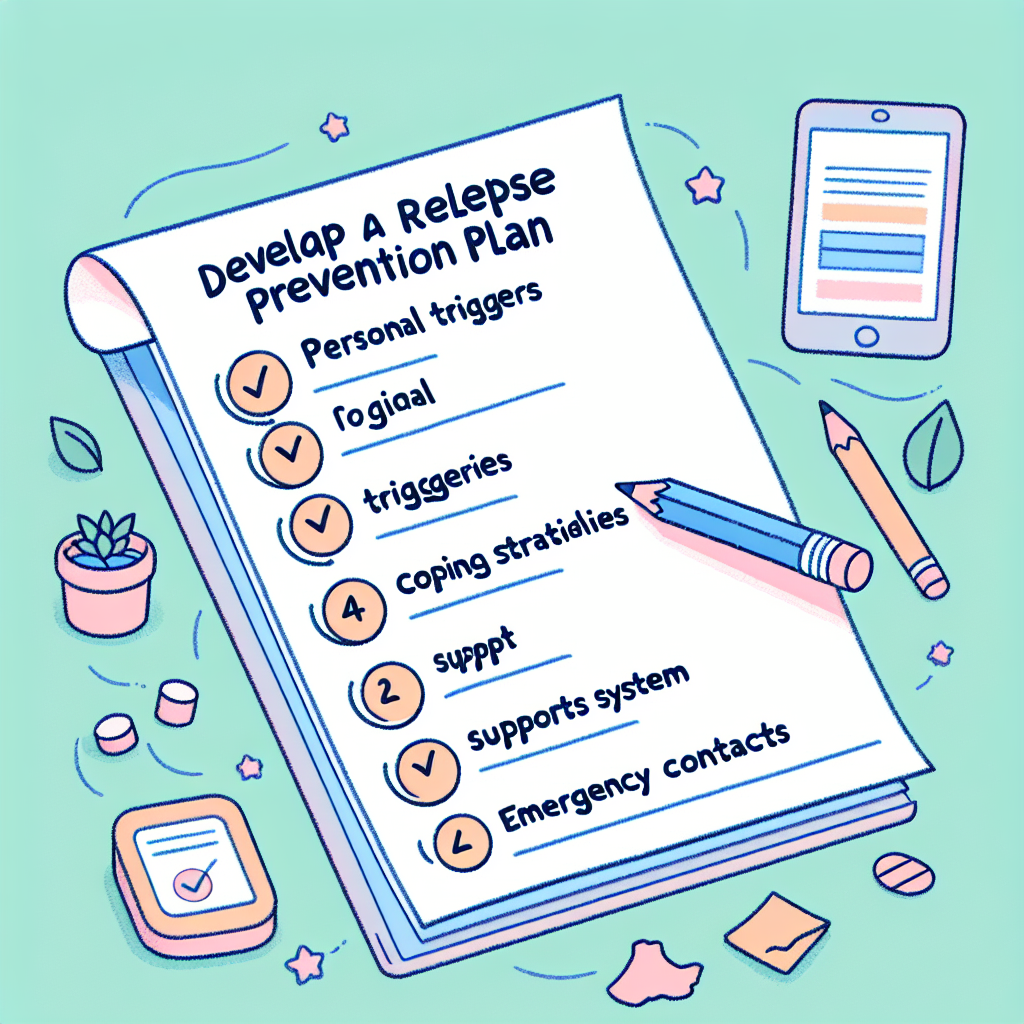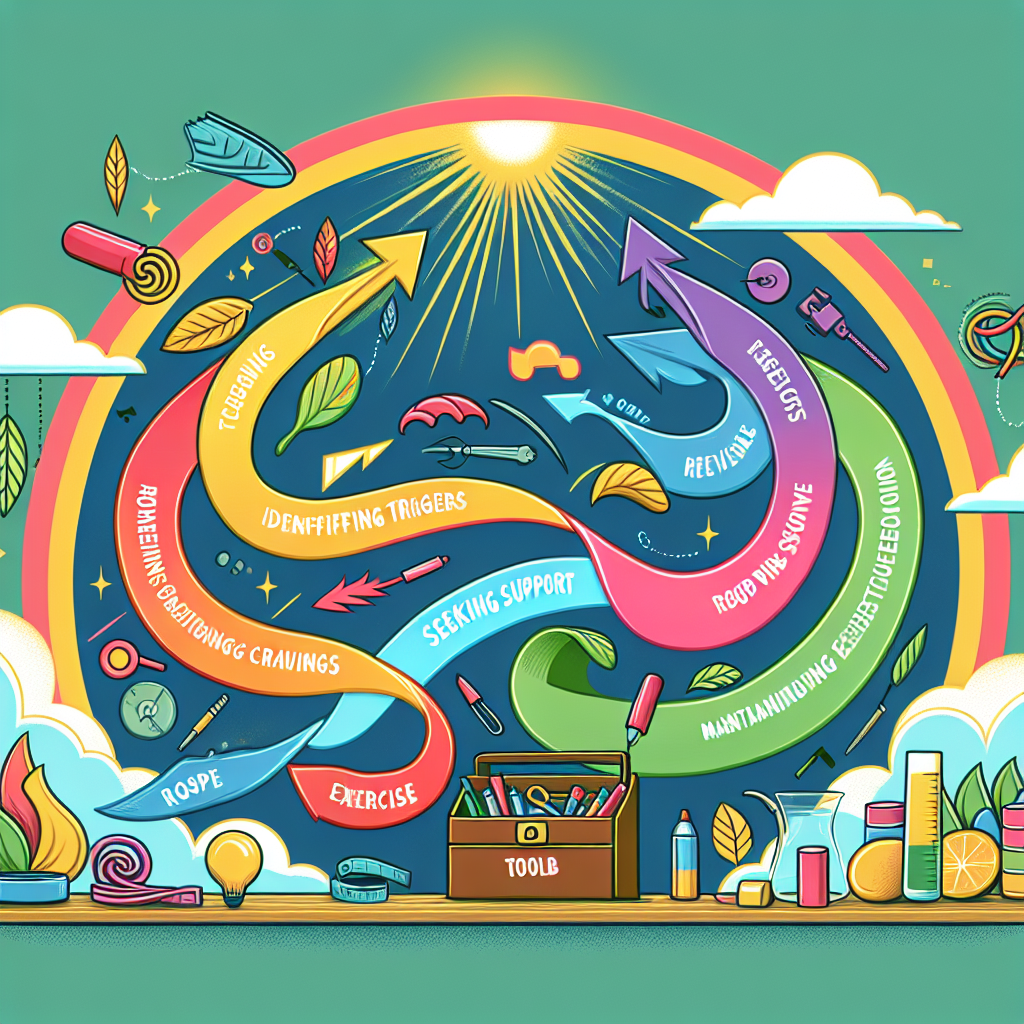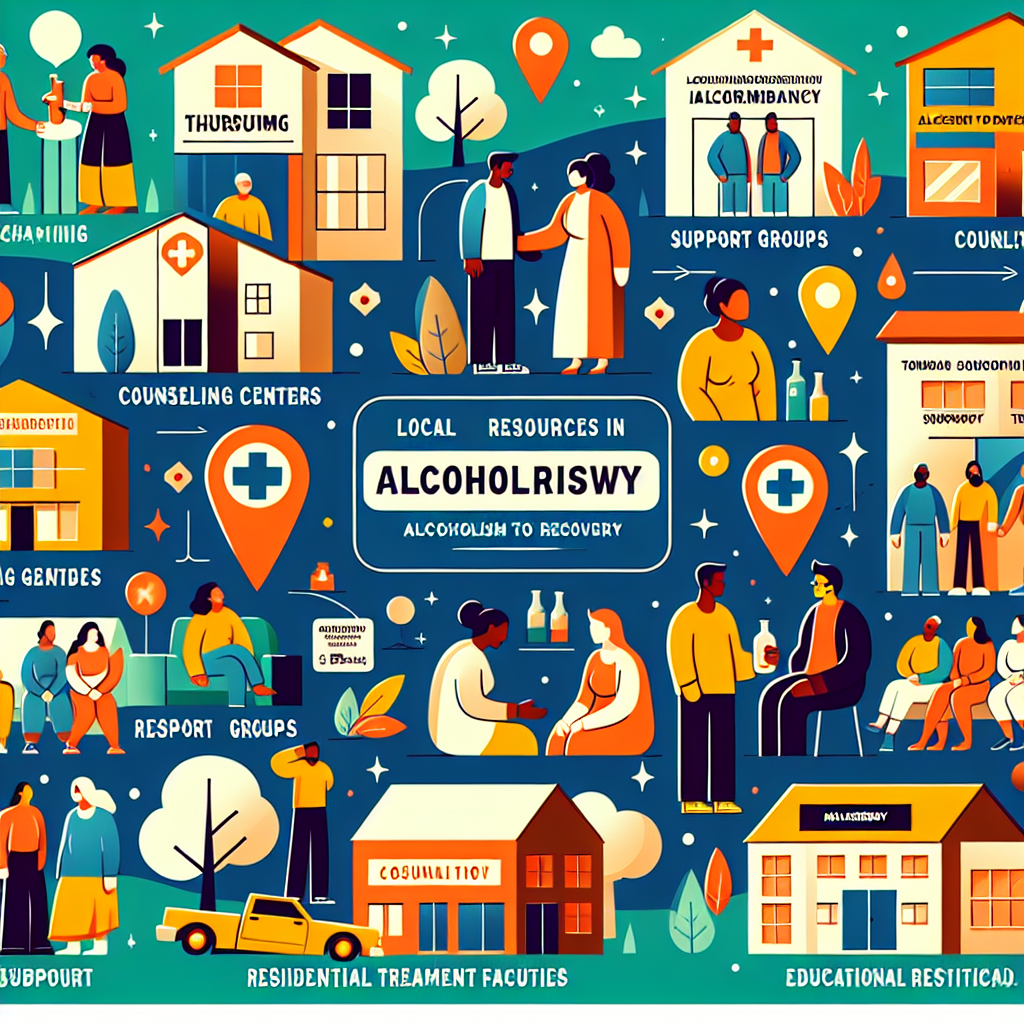-
Table of Contents

“Empower Your Recovery: Crafting a Resilient Relapse Prevention Plan”
Introduction
Developing a relapse prevention plan is a crucial step for individuals recovering from addiction or managing chronic conditions. This plan serves as a strategic framework designed to help individuals identify potential triggers, develop coping mechanisms, and maintain long-term recovery. A well-structured relapse prevention plan typically includes several key components: understanding personal triggers, creating a support network, establishing healthy routines, and setting realistic goals. By proactively addressing these areas, individuals can enhance their resilience, reduce the risk of relapse, and sustain their progress towards a healthier, more stable life.
Steps To Create An Effective Relapse Prevention Plan
Creating an effective relapse prevention plan is a crucial step in maintaining long-term recovery from addiction. This plan serves as a roadmap to navigate the challenges and triggers that may arise, helping individuals stay on track and avoid falling back into old habits. To begin with, it is essential to understand that relapse is not a sign of failure but rather a part of the recovery journey for many. By acknowledging this, one can approach the process with a mindset geared towards growth and resilience.
The first step in developing a relapse prevention plan is to identify personal triggers. These can be situations, people, or emotions that may lead to cravings or thoughts of using substances. By recognizing these triggers, individuals can prepare themselves to handle them effectively. For instance, if stress is a significant trigger, one might incorporate stress management techniques such as meditation, exercise, or deep-breathing exercises into their daily routine. This proactive approach can significantly reduce the likelihood of relapse.
Next, it is vital to develop coping strategies. These are specific actions or behaviors that can be employed when faced with triggers. Coping strategies can vary widely from person to person, but some common examples include reaching out to a supportive friend or family member, engaging in a hobby, or attending a support group meeting. The key is to have a diverse set of strategies so that one can choose the most appropriate response depending on the situation. Additionally, practicing these strategies regularly can make them more effective when needed.
Another important aspect of a relapse prevention plan is setting realistic and achievable goals. These goals should be specific, measurable, and time-bound, providing a clear sense of direction and purpose. For example, instead of setting a vague goal like “stay sober,” one might aim to attend a certain number of support group meetings each week or complete a specific number of therapy sessions. By breaking down the larger goal of maintaining sobriety into smaller, manageable steps, individuals can build confidence and momentum in their recovery journey.
Furthermore, building a strong support network is essential for relapse prevention. This network can include friends, family members, therapists, and support group members who understand the challenges of addiction and can offer encouragement and guidance. Regularly connecting with these individuals can provide a sense of accountability and remind one that they are not alone in their journey. In times of difficulty, having a reliable support system can make all the difference in staying committed to recovery.
In addition to these steps, it is crucial to maintain a healthy lifestyle. This includes getting adequate sleep, eating a balanced diet, and engaging in regular physical activity. A healthy body can support a healthy mind, making it easier to cope with stress and resist cravings. Moreover, self-care practices such as journaling, mindfulness, and relaxation techniques can enhance overall well-being and resilience.
Lastly, it is important to regularly review and update the relapse prevention plan. Recovery is an ongoing process, and what works at one stage may need to be adjusted as circumstances change. By periodically assessing the plan and making necessary modifications, individuals can ensure that it remains relevant and effective.
In conclusion, developing a relapse prevention plan involves identifying triggers, creating coping strategies, setting achievable goals, building a support network, maintaining a healthy lifestyle, and regularly reviewing the plan. By taking these steps, individuals can empower themselves to navigate the challenges of recovery with confidence and resilience, ultimately leading to a fulfilling and sober life.
Key Components Of A Successful Relapse Prevention Strategy
Developing a successful relapse prevention strategy is crucial for anyone striving to maintain long-term recovery from addiction. The journey to sobriety is often fraught with challenges, and having a well-thought-out plan can make all the difference. One of the key components of a successful relapse prevention strategy is self-awareness. Understanding your triggers, whether they are emotional, environmental, or social, is the first step in preventing relapse. By identifying these triggers, you can develop coping mechanisms to deal with them effectively. For instance, if stress is a significant trigger, learning stress management techniques such as mindfulness, meditation, or exercise can be incredibly beneficial.
Another essential element is building a strong support network. Surrounding yourself with people who understand your journey and can offer encouragement and accountability is invaluable. This network can include family, friends, support groups, or a sponsor. Regularly attending meetings and staying connected with others who are also in recovery can provide a sense of community and shared purpose. Moreover, having someone to call during moments of weakness can be a lifeline, offering immediate support and guidance.
In addition to self-awareness and support networks, setting realistic goals is vital. These goals should be specific, measurable, achievable, relevant, and time-bound (SMART). By setting clear objectives, you can create a roadmap for your recovery journey. These goals can range from short-term, such as attending a certain number of meetings per week, to long-term, like achieving a year of sobriety. Celebrating these milestones, no matter how small, can boost your confidence and motivation to stay on track.
Furthermore, developing healthy routines and habits can significantly contribute to relapse prevention. Establishing a daily schedule that includes time for self-care, exercise, and hobbies can provide structure and reduce the likelihood of falling back into old patterns. Engaging in activities that bring joy and fulfillment can also serve as a positive distraction from cravings and negative thoughts. Additionally, maintaining a balanced diet and getting adequate sleep are fundamental aspects of overall well-being, which can enhance your resilience against relapse.
Equally important is the practice of ongoing education and self-improvement. Continuously learning about addiction, recovery strategies, and personal development can empower you to make informed decisions and adapt to new challenges. Reading books, attending workshops, or participating in online courses can provide valuable insights and tools to strengthen your relapse prevention plan. Staying informed about the latest research and trends in addiction recovery can also help you stay ahead of potential pitfalls.
Lastly, it is crucial to have a contingency plan in place. Despite your best efforts, there may be times when you feel overwhelmed or tempted to relapse. Having a predetermined plan for these situations can make a significant difference. This plan might include contacting a trusted friend or sponsor, engaging in a distracting activity, or seeking professional help. Knowing that you have a strategy to fall back on can provide peace of mind and reinforce your commitment to recovery.
In conclusion, developing a successful relapse prevention strategy involves a combination of self-awareness, support networks, goal setting, healthy routines, ongoing education, and contingency planning. By integrating these components into your daily life, you can build a strong foundation for long-term sobriety. Remember, the journey to recovery is a marathon, not a sprint, and every step you take brings you closer to a healthier, more fulfilling life. Stay committed, stay inspired, and believe in your ability to overcome the challenges that come your way.
Q&A
1. **Question:** What are the key components of a relapse prevention plan?
**Answer:** The key components of a relapse prevention plan include identifying triggers, developing coping strategies, creating a support network, setting realistic goals, and establishing a routine for ongoing self-care and monitoring.
2. **Question:** How can one identify triggers in a relapse prevention plan?
**Answer:** One can identify triggers by reflecting on past experiences, keeping a journal to track situations and emotions that lead to cravings, and discussing potential triggers with a therapist or support group.
Conclusion
In conclusion, developing a relapse prevention plan involves several key steps: identifying personal triggers and high-risk situations, creating a list of coping strategies, establishing a support network, setting clear and achievable goals, and regularly reviewing and adjusting the plan as needed. By proactively addressing potential challenges and maintaining a structured approach, individuals can significantly enhance their ability to maintain long-term recovery and prevent relapse.



